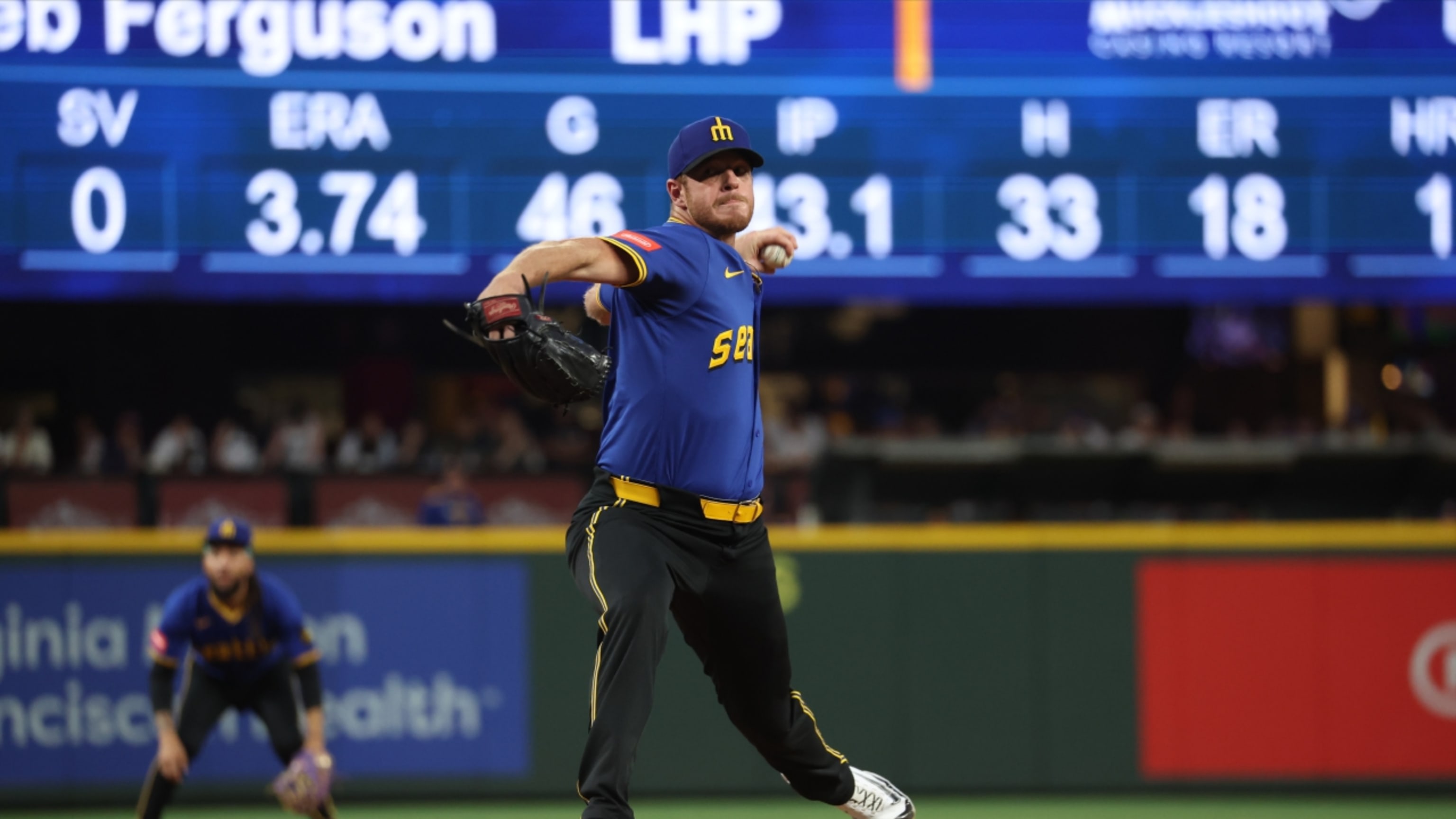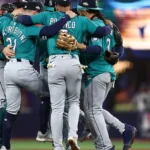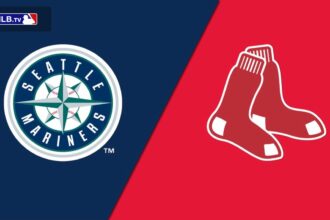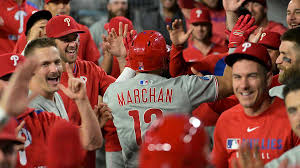The Seattle Mariners have already made one of their most significant offseason decisions, securing a foundational piece of their roster well before the winter market reaches full intensity. By re-signing slugger Josh Naylor to a five-year contract, the organization sent a clear message that it intends to maintain stability in the middle of its lineup while building around players it believes can influence the course of the franchise over the long haul. Bringing Naylor back provided early momentum to an offseason that promises to be busy, but the team’s next decision, though smaller in scope, still carries meaningful implications for roster construction as the Mariners attempt to stay competitive in a difficult American League landscape.
That next decision arrives quickly. Major League Baseball’s non-tender deadline, scheduled for Friday, forces front offices across the league to make final calls on arbitration-eligible players. While this date doesn’t attract the same level of attention as the Winter Meetings or the frenzy of free agency, it often provides backstage clarity about how organizations value certain players relative to projected salaries. Players who are eligible for arbitration must be offered a contract by this deadline; teams that choose not to extend that offer effectively part ways with the player, instantly making him a free agent.

Non-tendering is seldom a decision rooted purely in performance. Instead, it’s a nuanced calculation involving the arbitration process, which awards salary increases based on past production, playing time, and comparables across the league. Because arbitration tends to elevate a player’s salary regardless of whether a team feels that player fits its future plans, clubs frequently weigh the projected amount they’d be required to pay against the relative value the player actually provides. If the projected figure is deemed too high particularly for a depth piece or reliever clubs sometimes choose to move on.
For the Mariners, the most notable name under consideration this year is relief pitcher Trent Thornton, a player who, despite performing well since his arrival in Seattle, may find himself affected by this business-first aspect of roster management. MLB Trade Rumors, which annually releases salary projections for arbitration-eligible players, lists Thornton as a potential non-tender candidate for Seattle, projecting the right-hander to earn approximately $2.5 million if he proceeds through arbitration.

On the surface, such a number isn’t staggering, especially for a reliever with solid production. But every club views these decisions through the lens of overall roster flexibility, present needs, and the broader relief market. Seattle has several internal bullpen pieces it’s evaluating, and even modest salaries can become negotiable if a team believes it can replicate similar production for less.
Thornton’s journey to becoming a possible non-tender case is an interesting one. He joined the Mariners midway through the 2023 season after a stint with the Toronto Blue Jays, and almost immediately, he provided steady innings out of the bullpen. Reliability is often the most prized trait in relievers, and from that standpoint, Thornton delivered exactly what the Mariners hoped for. Over his time in Seattle, he has made 127 appearances, recording a 3.65 ERA across 140.2 innings and striking out 130 batters. Those are the kinds of numbers that, when viewed in isolation, appear worthy of retaining—especially for a bullpen that has often been a strength of the franchise.

His strong performance with the Mariners also helped reshape his reputation. Before arriving in Seattle, Thornton had spent portions of five seasons with the Blue Jays, posting a 4.77 ERA and struggling to carve out a consistent role as he bounced between starting and relieving duties. His time in Toronto was marked by flashes of potential but also inconsistency, and his move to Seattle seemed to catalyze a more mature, streamlined version of his game. By focusing solely on relief work, he found a rhythm, shown particularly by his improved strikeout rate and command.
Yet even with those strong results, there are contextual factors working against him. Thornton is now 32 years old, an age at which many relief pitchers begin transitioning into journeyman roles unless they possess elite velocity, swing-and-miss stuff, or a track record of high-leverage dominance. Teams see relievers in this tier as replaceable, particularly when their projected arbitration salaries drift toward the higher end of the middle-relief spectrum. Bullpens are often reconstructed annually with inexpensive arms, minor league signings, or pitchers acquired through low-cost trades. Seattle has been especially adept at identifying undervalued relievers, which makes a $2.5 million projection for Thornton less of a no-brainer than it might be for a team without that track record.

From the Mariners’ standpoint, the non-tender question involves weighing Thornton’s predictability against the opportunity cost of committing salary to a role they may believe they can fill through alternative channels. A non-tender does not necessarily indicate dissatisfaction with performance; in many cases, it is simply a strategic attempt to reshape financial commitments or reallocate resources. Should Seattle ultimately choose to non-tender Thornton, they wouldn’t necessarily be closing the door on bringing him back. In fact, in many similar situations, teams have non-tendered players primarily to avoid arbitration, then re-signed them at a lower salary or on a minor league deal with incentives.
This could easily apply here. Thornton’s market value, despite solid numbers, likely won’t skyrocket. Middle relievers rarely command significant money unless they have dominant stretches or closing experience, neither of which define Thornton’s profile. If the Mariners believe that his arbitration projection is slightly above where his value sits, they may allow him to enter free agency with the intention of negotiating a more team-friendly contract. Alternatively, they might already have internal candidates they feel can match Thornton’s production at a lower cost, making the decision simpler.

There is also an industry-wide trend influencing decisions like this: teams increasingly prioritize bullpen velocity and strikeout upside, often targeting younger arms who throw harder or have more developmental runway. Thornton has been reliable, but reliability alone doesn’t always outweigh calculable upside or cost efficiency.
Something else to consider is the Mariners’ broader offseason priorities. Re-signing Josh Naylor was a major financial commitment, and the team likely plans to continue pursuing roster upgrades. Whether those come in the form of offensive reinforcements, rotational depth, or additional bullpen help, every bit of financial flexibility enhances their ability to navigate the market. By trimming projected arbitration costs, they create more room to maneuver without committing money to players they believe they can replace or re-sign more cheaply.

That said, Thornton’s contributions shouldn’t be understated. In an era when bullpens are increasingly leaned upon, pitchers who can take the ball frequently, avoid implosions, and work multiple innings hold real value. His durability and consistency were assets for Seattle over the past two seasons, providing stability in games where starters struggled or where matchups dictated heavy bullpen use. Good teams tend to blend high-octane relievers with dependable veterans, and Thornton fit comfortably into that latter category.
The Mariners must also consider how the rest of the league values arms like Thornton. Reliable relievers with experience often land quickly in free agency, even at modest salaries. If Seattle opts to cut ties, there is a chance another organization offers him a more appealing contract, especially given his proven ability to pitch effectively in multiple roles. But the Mariners may believe they have enough depth or can attract similar pitchers through minor league contracts or waiver claims, something they’ve routinely done in recent years.

Ultimately, the decision revolves around efficiency more than emotion. Thornton is precisely the type of player most impacted by the non-tender deadline: useful, steady, but not irreplaceable. Relief pitchers often cycle through organizations at a faster rate than position players or starters, and teams constantly reassess bullpen structures due to the volatility inherent in relief performance.
As the deadline approaches, Seattle’s front office must determine whether Thornton’s projected salary fits within its strategic blueprint for the bullpen. If they decide against tendering him a contract, it wouldn’t necessarily signify a negative evaluation of his time with the club. Instead, it would reflect baseball’s broader financial ecosystem, one in which even consistent contributors face uncertainty when teams calculate salaries against projected value.

The Mariners could still bring him back on a cheaper deal. They could also opt to move forward with different relievers who provide similar production without the arbitration price tag. Regardless of the outcome, Thornton’s future in Seattle or elsewhere will hinge on how teams assess the balance between steady performance and cost control in a market that places heavy emphasis on bullpen flexibility.
For now, all that’s certain is that Seattle’s big offseason move has already been made with the Naylor extension. The next decision isn’t as dramatic, but it reflects the types of careful, cost-conscious evaluations that shape major league rosters long before Opening Day arrives.





